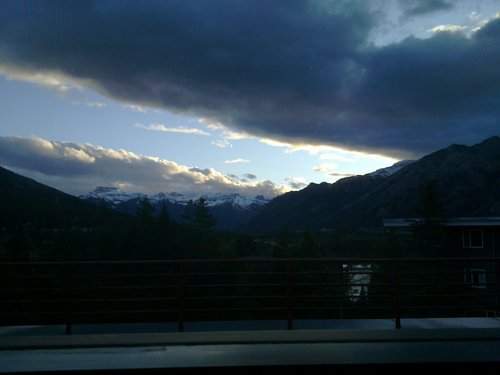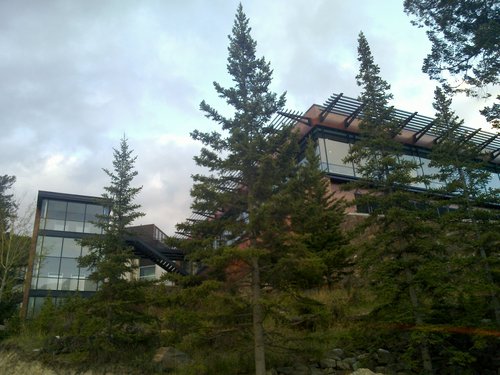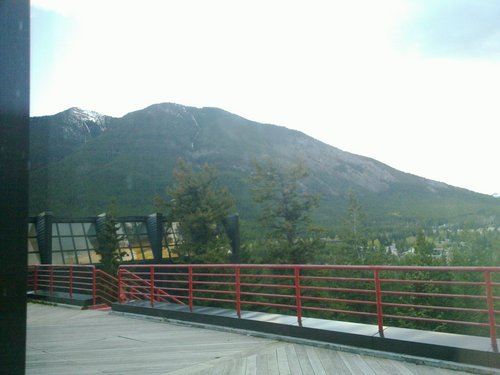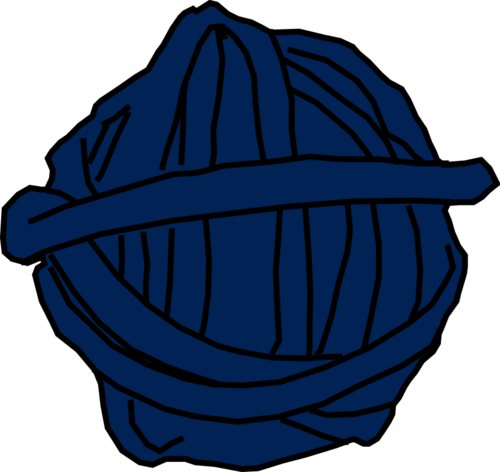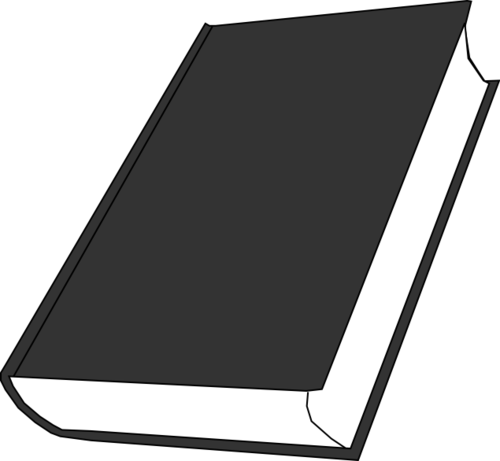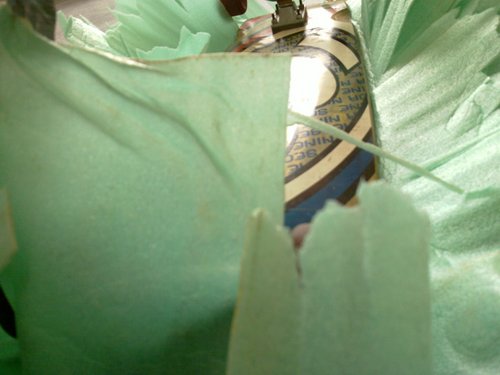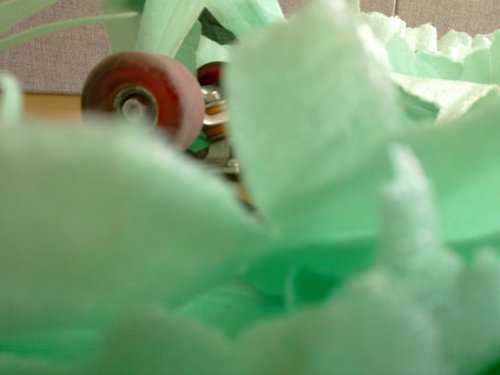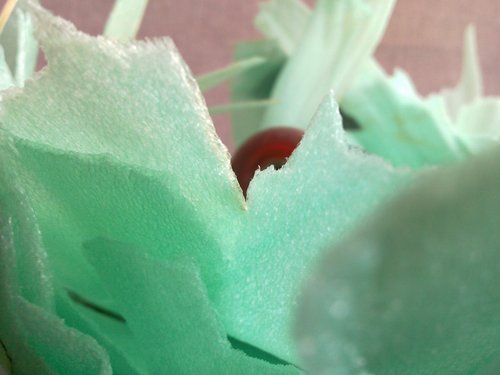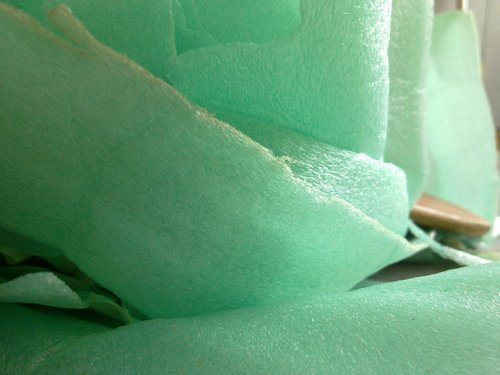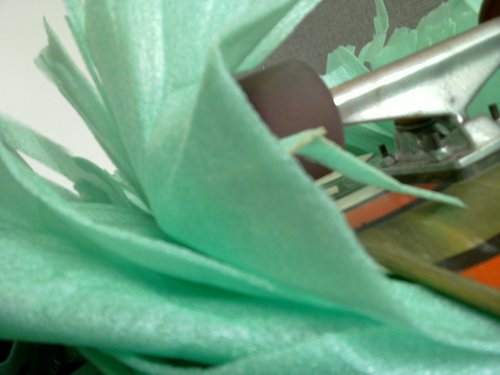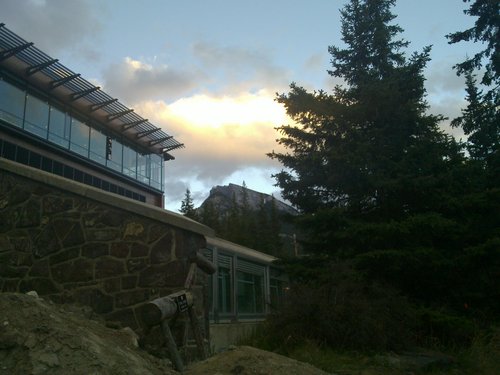June 2010 Archives
Sometimes, I feel like the proverbial mad scientist, locked up in my room, tinkering, scheming, building, making, cackling. I throw my thoughts up on my walls. I stare at them. I pace. I stare more. I write more. Then I go to lunch. And meet strangers. And talk. And sometimes, I bring them back. And we stare at the walls together, scheming, bouncing, building ideas together. And then they go and I stay and I build. And I build and I build and I build.
The future is supposed to be shiny. When electronics manufacturers sell their exciting new things, the presentation is slick, exciting, futuristic. You are living in the future now. Or rather, you will be if you purchase this item. But it's a little hard to believe that a new toy will make me feel more futuristic. It's heartening, then, to realize that eventually, all new technology becomes a sign in the window of a poky little store on a side street, declaring that "Yes! We sell item x!" It's pleasing to see the hand drawn signs, rendered in marker, in the windows of stores selling unlocked cell phones and other practical but non-futuristic items. Thus, the sign in the window of the store with the cluttered displays and barely visible name, on a little street in a tourist town, makes me happy. The enthusiasm that they display towards 3D TVs, accompanied by none of the exciting visuals normally paired with such technology, is refreshing. They have some of those particular TVs, they expect you to know what they are, and they expect passers-by to be drawn in by the simple promise that the items are available. And that's it.
As of right now, this very second, 10:51AM MDT, Wednesday the 23 June, I've been in Banff 20 days, minus a few hours. And it's been amazing. I feel like I'm building something. I don't really know what it is yet. But it's made up of lots of little pieces, little pieces inspired by being here. In fact, being here is the right term, the recurring theme in the last few weeks. Being here, not elsewhere, not thinking about another time or place, just experiencing a new now, as all nows are new, in this place. While the sounds of construction drown out the chirps of ground squirrels (onward! upward! towards progress!), I still feel dreamy. The mountains, a postcard in front of me, hardly real. Take a picture and it looks like nothing real at all. The panoramas, things I've only seen in pictures, can't possibly be true, though I might stand on them and feel them. Place. I went hiking one day, my companion likening the smell of hot pine to France. But standing on a mountain, looking at snow on the next one over. Of course, I've never been to France or smelled its smell of hot pine, but it appeals that we don't grasp the thing itself, instead turn it into other things, understandable things, things we've experienced already.
There's this mountain... And that one and that one and that one. And there's the valley, with the river flowing through, the river that eventually gets to Calgary and cuts it in half. And there's this town in the valley, swarming with tourists, with stores from malls and busses full of people who get driven to a particular point, let off to take pictures and then piled back in. And there's this gondola, costs $25 dollars to go up, but then you can say that you've been to the top of Sulfur Mountain. Where the hot springs were/are/aren't. Where they've got a pool, all tiled, all hot, but not smelling of sulfur at all.
But here, in this little bit, on the side of Tunnel Mountain, with the construction noise and the ground squirrels and the red staircases going a little rusty and in need of paint, it's pretty nice. The conferences come in and out, with lanyards on necks and signs in the dining room. The rooms are like hotels, tiny toiletries and complementary coffee alongside the ice bucket. But the people are good. The strangers I meet at breakfast, the dozen or so people I've seen most days for the last three weeks, we talk. And it's good. And I learn things. And I build on things that I already know. Then I go back to my studio, put ideas up on the walls, match them up, build them. I feel like I'm building something.
There's this mountain... And that one and that one and that one. And there's the valley, with the river flowing through, the river that eventually gets to Calgary and cuts it in half. And there's this town in the valley, swarming with tourists, with stores from malls and busses full of people who get driven to a particular point, let off to take pictures and then piled back in. And there's this gondola, costs $25 dollars to go up, but then you can say that you've been to the top of Sulfur Mountain. Where the hot springs were/are/aren't. Where they've got a pool, all tiled, all hot, but not smelling of sulfur at all.
But here, in this little bit, on the side of Tunnel Mountain, with the construction noise and the ground squirrels and the red staircases going a little rusty and in need of paint, it's pretty nice. The conferences come in and out, with lanyards on necks and signs in the dining room. The rooms are like hotels, tiny toiletries and complementary coffee alongside the ice bucket. But the people are good. The strangers I meet at breakfast, the dozen or so people I've seen most days for the last three weeks, we talk. And it's good. And I learn things. And I build on things that I already know. Then I go back to my studio, put ideas up on the walls, match them up, build them. I feel like I'm building something.
One of the projects I'm working on this month (one not involving ground squirrels) involves mapping. I'm mapping different things, in different styles, for different reasons. I'm collecting maps drawn by others. The map below is what I'm terming a very serious map of the town of Banff. It explains only where roads and waterways are. It shows the basic shape of the town, but nothing else about its character.
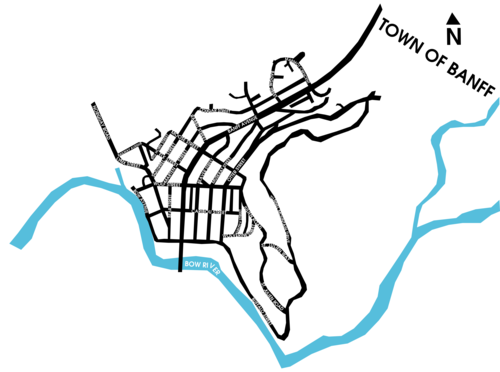

EDIT: It also completely fails to note where the mountains are.
For the last two weeks, I've been, as I believe I've mentioned before, on the side of a mountain. In the winter, it is a place famous for downhill snow sports. In the summer, it turns out that the streets in town are conveniently paved and house pleasantly cautious drivers. The first time I saw longboarders carving down the hills here, I kicked myself, wondering why I hadn't thought to bring mine. The situation has been remedied. My longboard got packed up in Toronto and sent on a cross-country Greyhound to come join me. Today, unpacking it from its protective wrapping, it occurred to me that it resembled nothing more than some creature, emerging from a cocoon. So I took photos of it in that posture. The best of them, under the heading "Longboard emerging from cocoon," are below.
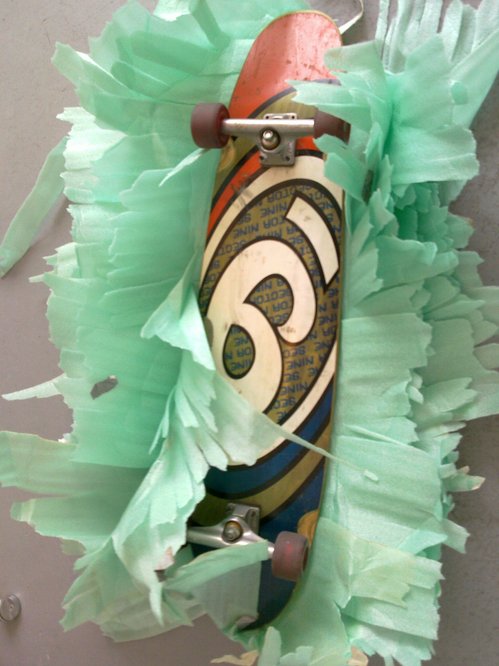
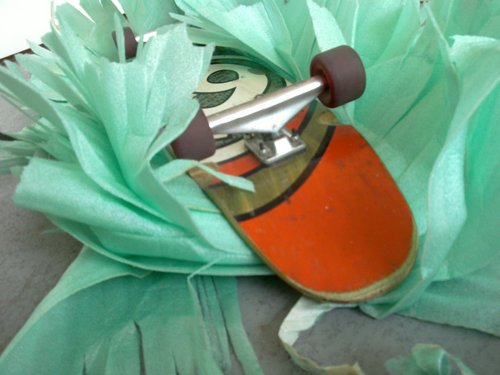


Last week, I posted about the ground squirrel concert I'm organizing (original post here). With weather forecast in hand, I've now chosen a proper date and revised the poster to match. Given that the vast majority of people in the world are not currently in Banff, the concrete date and time of the concert is probably of limited interest, but here it is anyway, for the sake of completeness: Wednesday, June 23, 7PM, on the grass behind Donald Cameron Hall at the Banff Centre. Below, the revised poster.
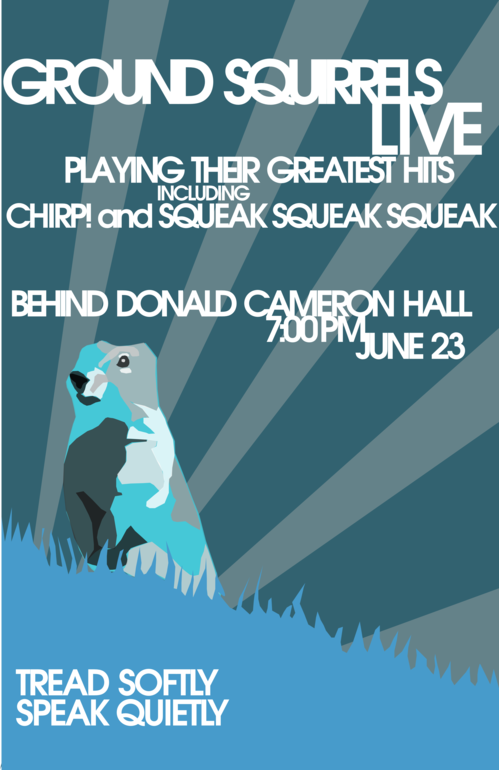

Worth mentioning: A couple weeks ago, I did a talk at the Libre Graphics Meeting about the Open Colour Standard.
Below: me, apparently very entertained by my own talk, wearing the shirt that almost has process colour (substitute the violet for cyan and it would be perfect) (photo courtesy of Constant)
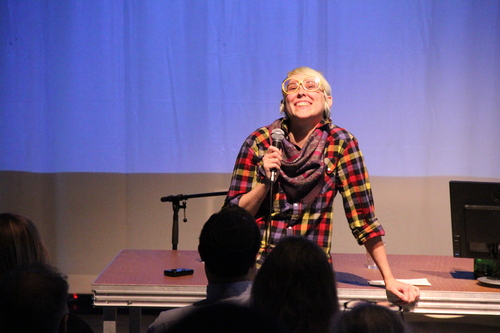 I did not include the slide with the beet. In fact, I eschewed slides almost completely and opted to just talk for a while. The talk can be viewed here.
I did not include the slide with the beet. In fact, I eschewed slides almost completely and opted to just talk for a while. The talk can be viewed here.
Below: me, apparently very entertained by my own talk, wearing the shirt that almost has process colour (substitute the violet for cyan and it would be perfect) (photo courtesy of Constant)
 I did not include the slide with the beet. In fact, I eschewed slides almost completely and opted to just talk for a while. The talk can be viewed here.
I did not include the slide with the beet. In fact, I eschewed slides almost completely and opted to just talk for a while. The talk can be viewed here.
In my personal lexicon, "fine" is a word that has diverged radically from its supposed meaning. When something is fine, it is supposed to be acceptable or okay. I've found, in recent times, that it means anything but that supposed meaning. Fine, for me, has come to be a passive aggressive way of indicating that something is, essentially, not fine at all. I think this usage is widespread and well known. Anyone claiming to be fine is often not. Something indicated as fine may be anything but.
What interests me is that the word has (again, I speak for myself) shifted completely. I feel incapable of interpreting fine as a good or acceptable thing, and can apparently only see it as negative. Fine is now, automatically, not good. I find it interesting that the explicit, defined meaning and the implicit, implied meaning have so completely converged.
What interests me is that the word has (again, I speak for myself) shifted completely. I feel incapable of interpreting fine as a good or acceptable thing, and can apparently only see it as negative. Fine is now, automatically, not good. I find it interesting that the explicit, defined meaning and the implicit, implied meaning have so completely converged.
Behind one of the older buildings at the Banff Centre, there's a great big expanse of grass. Under that grass lives a colony of Richardson's ground squirrels (commonly, but not necessarily accurately known as gophers). These ground squirrels spend their days chirping. Some of them shrug when they chirp. More often than not, when walking past, their upbeat chirping can be heard. I've decided to capitalize on that chirping. Next week, I'm organizing a ground squirrel concert. The premise is that people will show up, sit quietly, and enjoy some chirping. That's it. The idea is to sit in the grass, enjoy the evening sun and listen to some of our small neighbours as they do their standard chirping thing. Below, the poster I've done up. Even ground squirrels deserve to have cool concert posters.
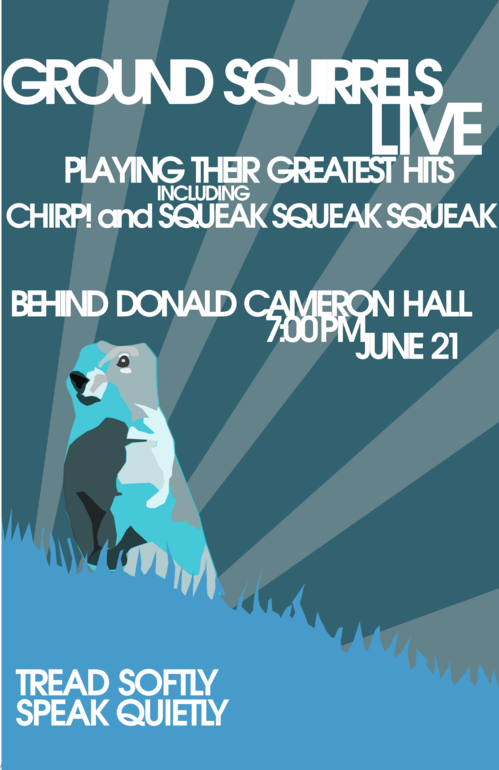

I'm at the Banff Centre, doing a residency. It's called Almost Perfect and is an opportunity to kick around in the mountains for a month, thinking big thoughts about locative media and eventually, producing something. So I've been futzing around, thinking about vernacular cartography, communication, traces and pervasive sociability. I've been pacing around my studio, staring out at the Rocky Mountains. There've been some pretty killer conversations, too. Basically, I've been defining things and mapping things. Below, some pictures of the process taking place on the walls of my studio, as well as transcriptions of that process.
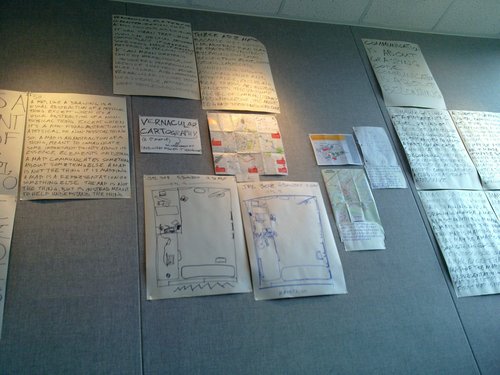
Maps
A map, like a drawing, is a visual abstraction of a physical thing. Except when it's a visual abstraction of a non-physical thing. Except when it's a non-visual abstraction of a physical or non-physical thing. So: A map is an abstraction of a thing, meant to communicate some important points about its essence, elements or details. A map communicates something about something else. A map is not the thing it is mapping. A map is a representation of something else. The map is not the thing, but is instead meant to help understand the thing.
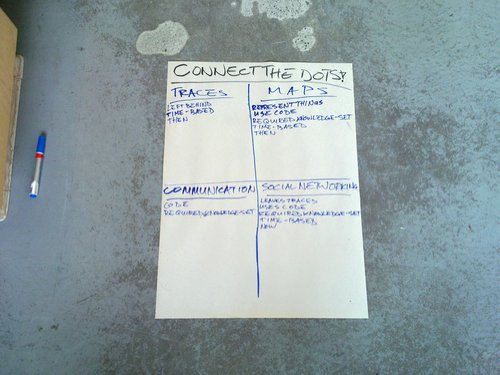
Communication
Communication, at a fundamental level, relies on a level of common literacy and knowledge, on the ability to grasp a particular code. Communication is about belonging. Shorthand code necessitates shared experience and social norms. Communication is a club with a secret handshake.
Maps as communication
A map is a form of communication. A map may be a drawing and a drawing may be a map. Almost anything may be a map, except the thing the map is mapping, although that may be a map of something else. So it is possible to map a map, except that the map of the map is a representation of the first map, but not of what the first map is mapping.
Maps and time
Maps represent moments in time. A map I draw now does not reflect the reality of the space two hours ago or the reality of how it will look in ten minutes. This is a good reason for representing in broad strokes. Fine detail changes too quickly.
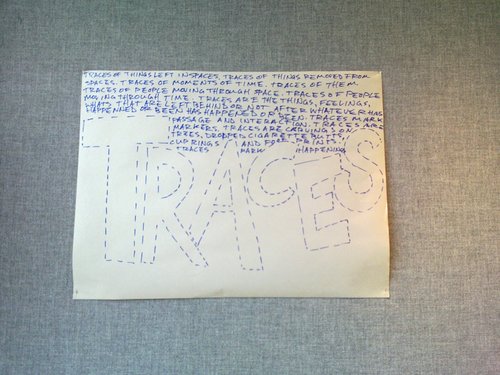
Traces
Traces of things left in spaces. Traces of things removed from spaces. Traces of moments of time. Traces of them. Traces of people moving through space. Traces of people moving through time. Traces are the things, feelings, whats that are left behind or not after whatever has happened or been has happened or been. Traces mark passage and interaction. Traces are markers. Traces are carvings on trees, dropped cigarette butts, cup rings and footprints. Traces mark happenings.
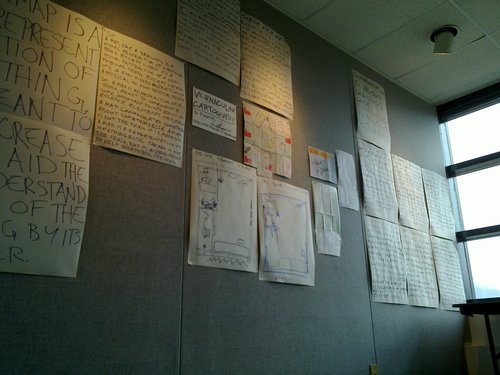
The vernacular
Vernacular, as a term or characterization, cuts across concepts and disciplines. It can mean that which is vulgar, or local, or simply commonplace. It can mean something made of available materials, in the local style. It can mean something done by normal people, not considered professional doers of that thing. Vernacular is local and commonplace. Vernacular is what people do as people, instead of what people do as workers.

Maps
A map, like a drawing, is a visual abstraction of a physical thing. Except when it's a visual abstraction of a non-physical thing. Except when it's a non-visual abstraction of a physical or non-physical thing. So: A map is an abstraction of a thing, meant to communicate some important points about its essence, elements or details. A map communicates something about something else. A map is not the thing it is mapping. A map is a representation of something else. The map is not the thing, but is instead meant to help understand the thing.

Communication
Communication, at a fundamental level, relies on a level of common literacy and knowledge, on the ability to grasp a particular code. Communication is about belonging. Shorthand code necessitates shared experience and social norms. Communication is a club with a secret handshake.
Maps as communication
A map is a form of communication. A map may be a drawing and a drawing may be a map. Almost anything may be a map, except the thing the map is mapping, although that may be a map of something else. So it is possible to map a map, except that the map of the map is a representation of the first map, but not of what the first map is mapping.
Maps and time
Maps represent moments in time. A map I draw now does not reflect the reality of the space two hours ago or the reality of how it will look in ten minutes. This is a good reason for representing in broad strokes. Fine detail changes too quickly.

Traces
Traces of things left in spaces. Traces of things removed from spaces. Traces of moments of time. Traces of them. Traces of people moving through space. Traces of people moving through time. Traces are the things, feelings, whats that are left behind or not after whatever has happened or been has happened or been. Traces mark passage and interaction. Traces are markers. Traces are carvings on trees, dropped cigarette butts, cup rings and footprints. Traces mark happenings.

The vernacular
Vernacular, as a term or characterization, cuts across concepts and disciplines. It can mean that which is vulgar, or local, or simply commonplace. It can mean something made of available materials, in the local style. It can mean something done by normal people, not considered professional doers of that thing. Vernacular is local and commonplace. Vernacular is what people do as people, instead of what people do as workers.
It's been an interesting week. The blog silence has been the result of a crazy travel schedule. Monday morning, I woke up in Brussels. Today, I'm nearly 5000 feet above sea level, staring at snow capped mountains. Busy week. So indulge me for a moment, if you will, and look at some pictures of Banff, which is in fact where I currently am. Over the coming month, I'll have more substantive stuff going on. There will be interesting work to show off. For now, though, I'm so overwhelmed by the scale of the place that I just want to post a pile of pictures of mountains. See below.
